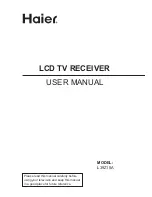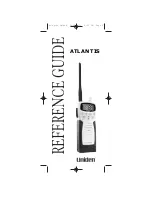
32
MDS 1710A/C and MDS 2710A/C/D
MDS 05-3447A01, Rev. F
Minor Alarms—
report conditions that, under most circumstances will
not prevent transceiver operation. This includes out-of-tolerance condi-
tions, baud rate mismatches, etc. The cause of these alarms should be
investigated and corrected to prevent eventual system failure.
Event Code Definitions
Table 8
contains a listing of all event codes that may be reported by the
transceiver.
Table 8. Event Codes
Event
Code
Event
Class
Description
01
Major
Improper software detected for this radio model.
02
Major
The model number of the transceiver is unprogrammed.
04
Major
One or both of the internal programmable synthesizer loops is
reporting an out-of-lock condition.
06
Major
An unrecoverable fault was detected on the A-to-D chip. The
radio will not receive data.
07
Major
One or more of the radio’s internal voltage regulators is
reporting a failure. The radio will not operate.
08
Major
The system is reporting that it has not been calibrated. Factory
calibration is required for proper radio operation.
09
--
Not used.
10
Major
The internal microcontroller was unable to properly program
the system to the appropriate EEPROM defaults. A hardware
problem may exist.
11
--
Not used.
12
Major
Receiver time-out. No data received within the specified
receiver time-out time.
13
Major
Transmitter time-out. The radio was keyed for a duration
exceeding the time-out timer setting. (This alarm clears the
next time the radio keys.)
14–15
--
Not used.
16
Minor
Not used.
17
Minor
A data parity fault has been detected on the DATA
INTERFACE connector. This usually indicates a parity setting
mismatch between the radio and the RTU.
18
Minor
A data framing error has been detected on the DATA
INTERFACE connector. This may indicate a baud rate
mismatch between the radio and the RTU.
19–24
--
Not used.
25
Minor
The 5.6 volt power regulator is out-of-tolerance. If the error is
excessive, operation may fail.
26
Minor
The DC input voltage is out-of-tolerance. If the voltage is too
far out of tolerance, operation may fail.
27, 28
--
Not used
31
Minor
The transceiver’s internal temperature is approaching an
out-of-tolerance condition. If the temperature drifts outside of
the recommended operating range, system operation may fail.
MDS 05-3447A01, Rev. F
MDS 1710A/C and MDS 2710A/C/D
9
Invisible place holder
Figure 5. Typical Remote Station Arrangement
3.1 Installation Steps
Below are the basic steps for installing the transceiver. In most cases,
these steps alone are sufficient to complete the installation. More
detailed explanations appear at the end of these steps.
1. Mount the transceiver to a stable surface using the brackets supplied
with the radio.
2. Install the antenna and antenna feedline for the station. Preset direc-
tional antennas in the desired direction.
3. Connect the data equipment to the transceiver’s
DATA INTERFACE
connector. Use only the required pins for the application—Do
not
use a fully pinned (25 conductor) cable. Basic applications may
require only the use of Pin 2 (transmit data—TXD), Pin 3 (Received
Data—RXD) and Pin 7 (signal ground). The radio can be keyed
with the use of the
DATAKEY
command.
Additional connections may be required for some installations.
Refer to the complete list of pin functions provided in
Table 4 on
page 14
.
4. Measure and install the primary power for the radio. The red wire on
the power cable is the positive lead; the black is negative.
13.8 VDC
POWER
CABLE
13.8 VDC
2.5 A (Minimum)
POWER SUPPLY
REMOTE TERMINAL
UNIT
ANTENNA SYSTEM
LOW-LOSS FEEDLINE
RADIO
TRANSCEIVER












































